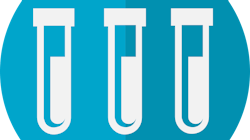T2 Biosystems introduces new clinical data on its rapid diagnostic technology
T2 Biosystems, Inc. an emerging provider and developer of innovative medical diagnostic products for critical unmet needs in healthcare, announced multiple updates regarding the clinical utility of its expanding portfolio of rapid diagnostics and technology during ASM Microbe 2019 in San Francisco, CA, June 19 to 24.
“The T2Bacteria and T2Candida panels are the first-and-only FDA cleared tests that can provide direct-from-blood, rapid diagnostics for patients suspected of blood stream infection or sepsis,” said John McDonough, President and Chief Executive Officer of T2 Biosystems, in a statement. “This patent-protected technological innovation is a major accomplishment, particularly when considering the decades of attempted development efforts from over a half dozen other companies that did not yield FDA cleared tests. Since introducing our T2Bacteria Panel at last year’s meeting, we are proud to share that we’ve altered the course of clinical treatment in meaningful ways, making a significant impact on healthcare facilities and the patients they treat.”
Throughout the show, T2 Biosystems said it offered attendees multiple opportunities to experience new data that underscore the benefits experienced by facilities who have adopted T2 technology. Tom Lowery, PhD, Chief Scientific Officer, T2 Biosystems, presented an Industry Education Workshop, Rapid, Direct-from-Blood Diagnostics that Enable Changes in Clinical Decisions, which highlighted clinical updates regarding current and future applications of T2 technology, including T2Bacteria which provides actionable clinical information. The new T2Bacteria Panel clinical data being generated by independent commercial users shows its ability to benefit tested patients in the emergency department by providing information that leads to more rapid time to delivery of effective therapy, de-escalation of unnecessary therapy, and helping avoid premature discharge and readmission to the emergency department.
Additional highlights:
- A meta-analysis of 70 studies highlights significant challenges of empiric therapy (without T2Bacteria and T2Candida): 46.5 percent of patients are on inappropriate antibiotic therapy with empiric therapy alone, while >90 percent are on effective therapy after accurate species identification, such as provided by T2Bacteria and T2Candida.
- T2Bacteria clinical patient selection algorithms demonstrate significant clinical impact: Dr. Lowery reviewed T2Bacteria patient selection algorithms implemented by T2Bacteria customers and summarized emerging clinical utility data of 120 clinical cases demonstrating significant clinical impact. He also detailed multiple cases demonstrating the impact and potential impact of T2Bacteria on clinical outcomes.
- T2Resistance Panel provides ≥ two-day time advantage compared to conventional methods: The T2Resistance Panel, which was recently granted Breakthrough Device designation by the FDA, is designed to detect 13 resistance genes from both gram-positive and gram-negative pathogens direct from blood. Initial data demonstrates T2Resistance identifies these resistance genes with an average time of 5.3 hours compared to an average of 30 hours (and up to 95 hours) with conventional methods. The T2Resistance Panel is expected to be available for research use only (RUO) in the U.S. and receive CE-Mark for commercial availability in Europe by the end of 2019.
- T2MR Technology has the potential to provide coverage for ≥99 percent of bloodstream infections: Dr. Lowery presented feasibility data demonstrating that the T2MR Technology has the capability to potentially detect >250 pathogen species, which would cover ≥99 percent of blood-borne pathogens responsible for bloodstream infections and sepsis. It has also demonstrated the ability to potentially detect resistance markers for all blood-borne antibiotic resistance threats identified by the Centers for Disease Control (CDC). These diagnostic capabilities could allow the Company to develop a panel that provides comprehensive coverage of bloodstream infections.
